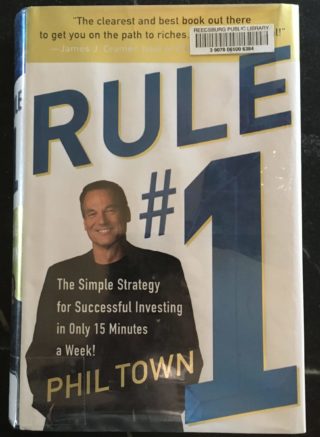Rule #1 by Phil Town
This book offers a simplified strategy for choosing companies to invest in, how to estimate the intrinsic value of the company, and how to decide when to buy and sell.
Rule #1 refers to a favorite quote from Warren Buffett where he says that rule number one of investing is to not lose money, and rule number two is don’t forget rule number one.
The book introduces the “Four Ms” for selecting companies:
- Does the business have Meaning to you?
- Does the business have a Moat? (sustainable competitive advantage)
- Does the business have great Management?
- Can you buy the stock with a Margin of Safety? (discount to its intrinsic value)
To get to intrinsic value, the book focuses on “The Big 5 Numbers”:
- Return on Invested Capital (ROIC)
- Sales growth rate
- Earnings per share (EPS) growth rate
- Equity growth rate
- Cash growth rate
Based on these growth rates an estimate is made of growth rate going forward. This estimate is used to calculate the earnings per share ten years in the future. Another estimate is made for what the future price/earnings ration (P/E) will be in 10 years. Combining these two estimates allows estimation of what the stock price will be 10 years from now. This is then discounted back to the present at a 15% rate to get what the author calls the “sticker price”.
The obvious limitation of this method is the assumption that the business will continue to grow at the estimated rate for the next 10 years. As Bruce Greenwald points out in his book Value Investing, small changes in the estimated growth rate can have big effects on the future value. It is very difficult to know what will happen in the future.
To cover this inherent limitation, Phil Town recommends only buying a stock when you can get it at 50% or less of the “sticker price”. This goes back to the ideas of Benjamin Graham. In most cases this should cover inaccuracies in the growth estimate along with any other unknown factors in the future.
One result of this methodology is that there will be times where the market is at high valuations and no stocks can be found that meet the criteria. In this case the recommendation is to remain in cash until the market changes.
The book also describes a quantitative method for deciding when to sell your stock, which I won’t cover here.
This book was published in 2006 and he has a more recent book called Payback Time published after the financial crisis, and then his daughter Danielle Town published her own book on how she learned and applied this methodology.
